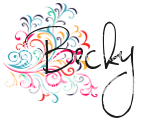If
one spooky holiday isn’t enough for you, then you’re in luck! Halloween and Dia
de los Muertos are perfectly timed to stir up all kinds of spooky spirits and
lots of learning. Halloween is celebrated on October 31st. On
midnight of the same day, people in Central and Southern Mexico believe that
the gates of heaven open. This allows the spirits of the dead to return between
November 1st and 2nd to visit their relatives and
friends. The first spirits to arrive are the angelitos, or the spirits of
deceased children. Then on November 2nd, the spirits of adults are
allowed to return.
All
Hallows Eve, or Halloween, as it’s commonly known, is one the largest commercial
holidays in the world. The only holiday that out spends Halloween is
Christmas! Whether it’s attending costume parties, dressing up as crazy
characters, or watching little faces light up as you ply them with sugary
sweets, there are a lot of reasons why people love this haunted holiday.
Halloween originated as a Celtic festival called Samhain. The holiday was full
of spooky specters roving around. Many of our current traditions stem from
activities done during Samhain. For example, do you know why people originally
dressed in costume? It wasn’t to get candy! Long ago, people dressed up to
disguise themselves from evil spirits that may have been roaming around during the
festival. Eventually the Christian church changed the name of the holiday to
All Hallows Eve and dedicated it to the remembrance of the dead and saints of
the church, in order to try to Christianize the pagan holiday. The name was
shortened over time to Halloween, and is now one of the most popular holidays
around!
Dia de los Muertos is one of the most
important celebrations in many towns and villages in Mexico. In fact, some
people will spend about two months of what they earn preparing to welcome the
dead. The families create ofrendas, or altars, to their dead relatives. Typically
the ofrendas will be decorated with pictures of the deceased, candles, and orange
marigolds. The family will also leave gifts for the dead such as: pan de
muertos (bread of the dead), fruit, drinks, and other things that are
associated with the person that’s passed away. In some areas the families will
set places at their tables to welcome back the spirits of their loved ones. Local
artisans prepare papel picado banners to be used in church services during the
holiday, and to decorate for Dia de los Muertos. Candy makers also prepare in
advance by making a huge number of Calaveras, decorated with icing. These
spectacular little skulls can be made of chocolate, but are generally created
from sugar. The holiday goers can smash the sugar skulls to symbolize victory
over death, before they eat the sweet treat. They also make little sugar coffins
to delight the younger patrons of the holiday. Where some people view death as
an end, Dia de los Muertos celebrates the beauty of the cycle of life and the
lives are loved ones. Due to its colorful and fun nature, it’s also attracting
a following in countries all around the world.
These holidays coincide so well that I love
to take a little time to teach about both around Halloween time. It’s also the
perfect time to include some global awareness for my munchkins! We generally
spend a little more time on Dia de los Muertos as it’s a lesser known holiday.
Then I let the kids compare and contrast the two holidays. They usually think
it’s so cool how closely the two holidays parallel even though they originated
in totally different areas of the world. It’s an open door to share how many
similarities people have from so many different places.
If
you’re interested in more info about either of these holidays, check out these
great videos I found online…
If
you’d like a quick, easy activity pack to coincide with either of these
holidays, then check out these products at my Teachers Pay Teachers store!
Thanks
for Stopping By!
I hope you have a SPOOKtacular weekend!











